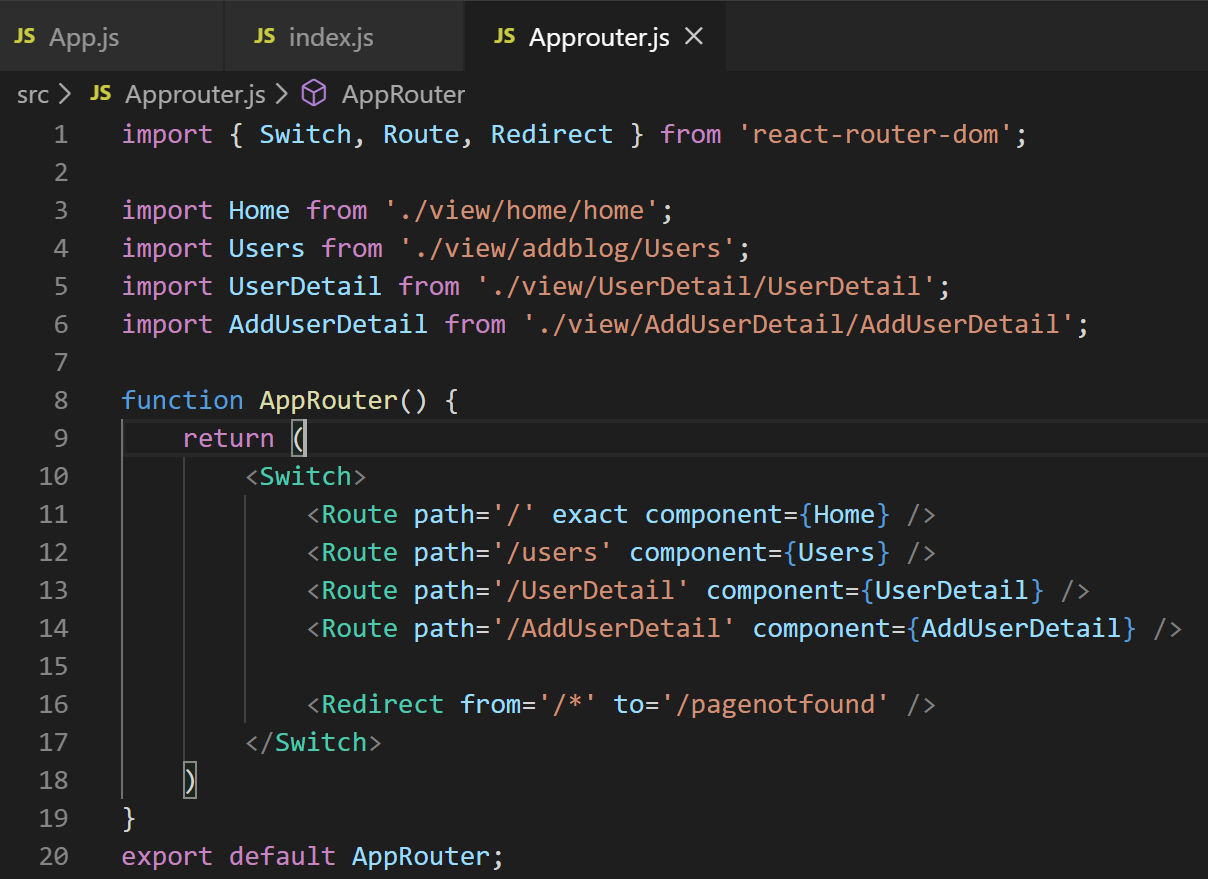

- #Npm react router dom how to#
- #Npm react router dom install#
- #Npm react router dom full#
- #Npm react router dom code#
Next, execute the following command: create-react-app react-router-example You just need to have Node.js version 6 or superior installed.

#Npm react router dom install#
You can install (or update) it with: npm install -g create-react-app I’m going to use Create React App to create a React app. Let’s start by creating a sample project and setting up React Router. It allows you define routes in the same declarative style: īut let’s not get ahead of ourselves. React Router is the most popular routing library for React. However, as React focuses only on building user interfaces, it doesn’t have a built-in solution for routing. React is a popular library for building SPAs. On Twitter, for example, notice how the URL changes when a tweet is clicked:Ī router allows your application to navigate between different components, changing the browser URL, modifying the browser history, and keeping the UI state in sync.
#Npm react router dom full#
Click here to see the full demo with network requests At the same time, it also needs to rebuild the application state from information contained within the URL. Something that, according to the application’s state, changes the URL to push or replace URL history events within the browser. Because the application is contained in a single page, it cannot rely on the browser’s forward/back buttons per se. These applications are easy to deploy and greatly improve the user experience. When you click on a tweet, only the tweet’s information is fetched from the server. Twitter is a good example of this type of application. Single-page applications (SPAs) rewrite sections of a page rather than loading entire new pages from a server.
#Npm react router dom code#
For reference, the code of the final example is available on GitHub. You can find an interactive demo on CodeSandbox. To demonstrate how React Router DOM works, we’ll create an example React app.
#Npm react router dom how to#
We’ll also review the essential components of the framework and demonstrate how to build routes with parameters, like /messages/10. We’ll cover the general concept of a router and how to set up and install React Router. In this post, I’ll get you started with the basics of the web version, React Router DOM. But if you’re just starting out with React Router, all that might be too much to wrap your head around. We’ve covered React Router extensively, including how to use Hooks alongside and instead of React Router, how to use React Router with Redux, and other advanced use cases. It may still contain information that is out of date. Find me at React Router DOM: How to handle routing in web appsĮditor’s note: This React Router DOM tutorial was last updated on 11 August 2021. Like books, movies, and still trying many things. Import from "react-router-dom" Ĭonst rootElement = document.Esteban Herrera Follow Family man.

We enclose the whole App component in which enables all the functionality of “ react-router-dom” within it.įurther, renders the first route that matches the current browser URL. To configure the routes, all the required components are imported from “ react-router-dom” package.

Similarly, two other components for the About and blog page is created. We will create a React component for the Home page which displays a heading with the text “ Home Page Body“. Create React Components for home, about and blog Once the package is successfully installed, we can verify the dependencies from the package.json of the project. With the terminal command below: npm i react-router-dom We will install the “ react-router-dom” package to add routing functionality to the project. React is a JavaScript library, not a framework hence many of the functionalities including routing aren’t built-in and need to be added through npm packages.


 0 kommentar(er)
0 kommentar(er)
